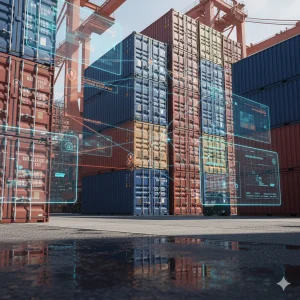In today’s highly connected world, reputational and regulatory risks don’t just affect financial institutions but define them. A single oversight in customer screening can quickly escalate into reputational damage, regulatory penalties, or operational disruption.
One of the most persistent challenges? Accurately identifying and monitoring politically exposed persons (PEPs), their relatives and close associates (RCAs), and individuals linked to adverse media. These risks aren’t always documented, disclosed, or obvious. They often exist beyond the scope of traditional screening lists.
Yet, regulators across the US, UK, and Europe expect institutions to detect these relationships, not just during onboarding, but throughout the entire customer lifecycle. And doing at scale, with precision, and consistency, is where most legacy tools fall short.
The Real World Challenge Behind the Acronyms
- PEPs: Individuals who hold public roles, such as politicians, judges, or military officers. Because of their influence, they are considered high risk when it comes to financial crime exposure.
- RCAs: These individuals are the family members, business partners, or close associates of PEPs. Even if they don’t hold the office themselves, they can still be involved in suspicious financial activity.
- Reputational Risk: This damage arises when a customer (or someone connected to them) is linked to media reports about fraud, corruption, or other misconduct, even if no formal charges are filed.
The challenge? These connections are often buried in complex corporate structures, informal networks, or deep in media archives. Traditional screening tools, such as basic name-matching against government lists, just aren’t enough to catch them.
Why Manual Processes Are Becoming Ineffective
Many compliance teams still rely on fragmented, legacy systems and manual checks. This often leads to:
- Too many false positives
- Missed high-risk individuals who aren’t on a formal list
- Hours wasted verifying basic identity data
- Delays in onboarding and approving transactions
The result? Compliance teams are overworked, risk teams are overwhelmed, and high-risk customers can slip through the cracks. Modern risk environments demand a faster, more intelligent approach, especially for firms with cross-border operations.
What Smart Screening Looks Like
Today, advanced compliance platforms go well beyond outdated checklists. The goal is not just to “detect”, but to understand risk in a real-world context.
Here’s what effective, scalable screening looks like:
Contextual PEP Screening
Not all PEPs carry the same level of risk. An entry-level public official in a low-risk region poses a different exposure than a senior government official operating in a high-risk jurisdiction. Modern screening tools can adjust for role, geography, and influence, so your team can focus on what truly matters.
Enhanced RCA Identification
RCAs don’t always share last names or formal titles. Using relationship-mapping and behavioral insights, intelligent systems help uncover connections that manual processes might miss, such as business partners or silent stakeholders.
Real-Time Monitoring for Reputational Risk
Risk profiles change. Today’s low-risk client may appear in tomorrow’s headline. With ongoing media monitoring across thousands of global sources, firms can detect early reputational red flags and act before exposure escalates.
Scoring & Prioritizing to Avoid Alert Fatigue
Not every alert should be treated equally. Scoring models help compliance teams prioritize cases based on risk severity, so low-risk matches don’t bury urgent threats.
Continuous Monitoring: Because Risk Evolves
Screening shouldn’t stop after a client is onboarded. PEPs can be appointed, sanctioned, or implicated in investigations at any time, and compliance teams must be ready.
Modern compliance systems should provide:
- Automated rescreening when a client’s status changes
- Instant alerts for new risks tied to existing clients
- Documentation trails make internal reviews and regulatory audits easier to manage
What to Look for in a Scalable Screening Platform
If you’re evaluating your current screening setup, here are five capabilities to prioritize:
- Broad Global Coverage: PEP, RCA, and adverse media data across all jurisdictions
- Real-Time Intelligence: Updated instantly, not weekly or monthly
- Flexible Workflows: Configurable by geography, customer type, and product line
- Low false positive rates: Context-aware models that reduce unnecessary alerts
- Audit Readiness: Complete documentation and traceable review logs
AI-powered AML automated screening platforms like IDYC360 bring all these capabilities together. This enables institutions to manage growing regulatory pressure without overwhelming compliance operations.
Final Thoughts
As financial ecosystems grow more complex, accurate and efficient screening becomes a strategic advantage. The institutions that succeed won’t be the ones that generate the most alerts; they’ll be the ones that know which alerts matter, why, and what to do next.
Whether you’re a global bank, regional lender, or fast-scaling fintech, the ability to screen PEPs, RCAs, and reputational risk with context and control is no longer optional; it’s essential.
Ready to Stay
Compliant—Without Slowing Down?
Move at crypto speed without losing sight of your regulatory obligations.
With IDYC360, you can scale securely, onboard instantly, and monitor risk in real time—without the friction.











